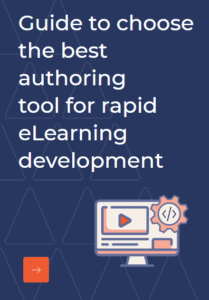And so, we are back again with a Bond story (007 remember?). well just to jog your memory we mentioned Bond’s custom suits in a post where we discussed the benefits of Custom eLearning development.
But, as we all know the custom suits of Bond are only worth it if they serve the purpose of style, comfort, and most importantly the flexibility of movement that the character needs and if the cost justifies it all.
That is custom eLearning in Bond terms, learning that serves the custom requirement of the organization. So, what do we compare it with? Off-the-shelf courses would be the obvious answer. But, what one needs to consider is that off-the-shelf courses are generic. Constitutes of generic content, packaged in a generic framework and works perfectly when the learning requirements are identical. Say, for instance, compliance training, team building processes, change management, etc. that have specific industrial standards and are hence, are common across the industry. But, on the other hand, are topics related to specific products, custom software, unique customer policies or laws, off-the-shelf courses are often of little use here, and custom eLearning development comes as the best option.
But, there still remains that daunting question. Is it worth the cost? Instead of getting into the complexities of cost analysis let's make it simpler and compare it in terms of benefits.
Cost of Customization
As described above custom eLearning is about the elements of customizations, it is about targeted training requirements. It is about personalized content, and all of this requires specializations. The custom eLearning development follows a sequential procedure that begins with requirement analysis-content gathering followed by instructional design, a development that includes media inputs, interactions, UI design, voice-over, etc. followed by prototyping, modifications, creation of final eLearning course, testing, and deployment. Each of these steps involves manpower (SMEs, IDs, Developers, Testing team to name a few), specific software (instructional design, authoring, testing, and even deployment). If we were to calculate the individual cost of each, the cost of custom eLearning development would be really high, however, most eLearning vendors offer the services at relatively less rates, hence making the overall cost affordable, and of the kind that befits the organization’s budget.
Cost of Engagement
The real task usually begins after the purchase of off-the-shelf courses. The learners have to be introduced to the context of learning, prepped for undergoing training. Very often learners at different levels of expertise are given the same generic courses which tend to bore them or don’t run on the different devices that they use, or maybe don’t come with an option to run on personal devices. Custom eLearning on the other hand is designed to function on the device of choice, support anytime, anywhere (even offline learning if need be) and all this to deliver effective learning that keeps the learner's engagement. The cost of custom eLearning development is often balanced by the engagement and effective co-efficient, factors that can seldom be quantified in terms of money.
Cost of Branding
Off-the-shelf courses as we know are generic, and hence do not follow the specific branding requirements of organizations. Branding is a good way to continuously impart the brand values, give a sense of continuity, and build a connective atmosphere. Custom eLearning not only takes care of the branding in terms of colors and symbols but also tries to imbibe the organization’s key values and vision within the content. Here again, the cost of development can often be equated with the value it adds.
Custom eLearning is all about tailoring scenarios that suit the industry or domain, about changes and modification according to time technology, etc. In addition, it also offers specific assessment, evaluation, and feedback options that can improve the overall learning ecosystem, improve performance and eventually assist in meeting the organizational goals.
What parameters do you use to equate the cost? Do share your valuable inputs.



